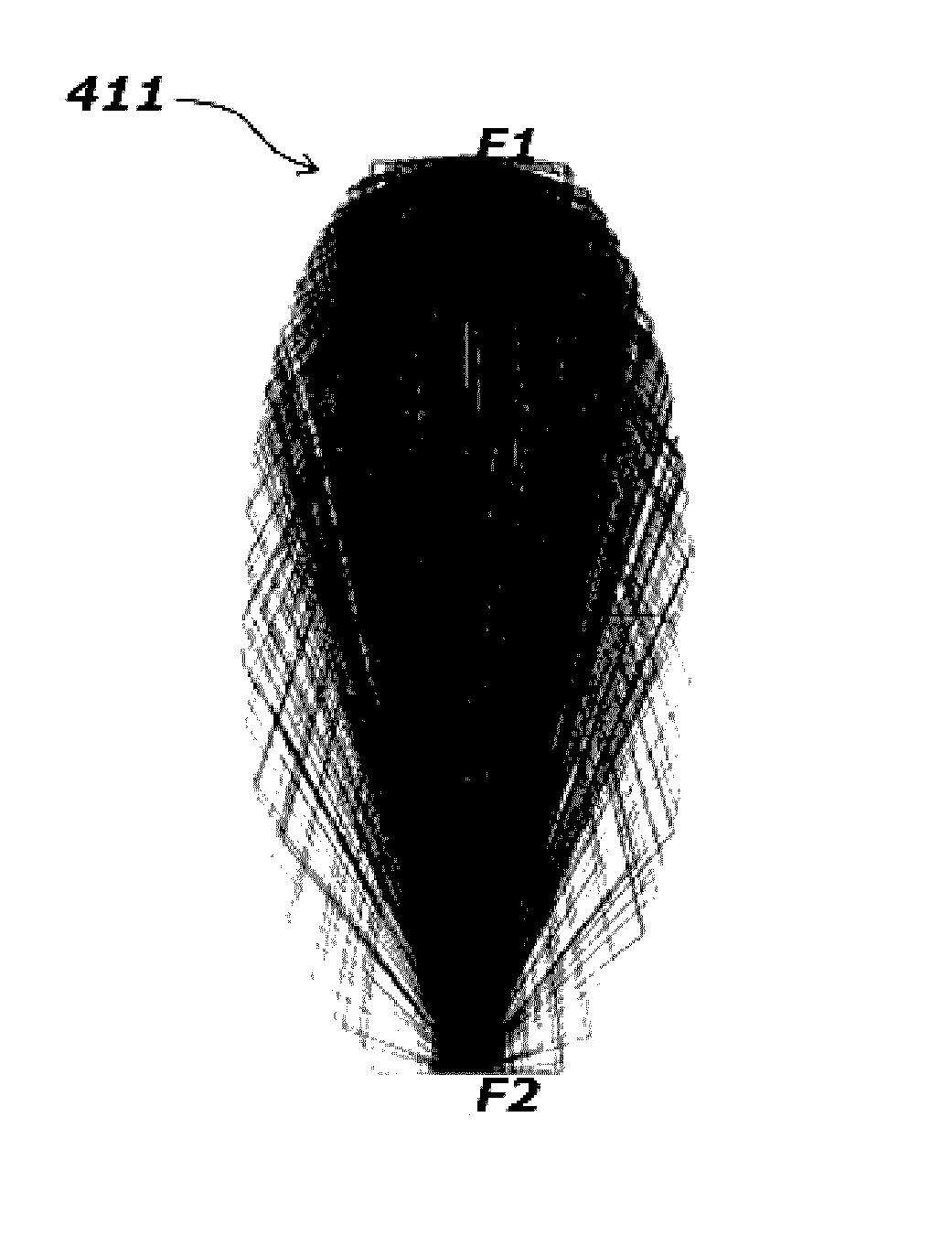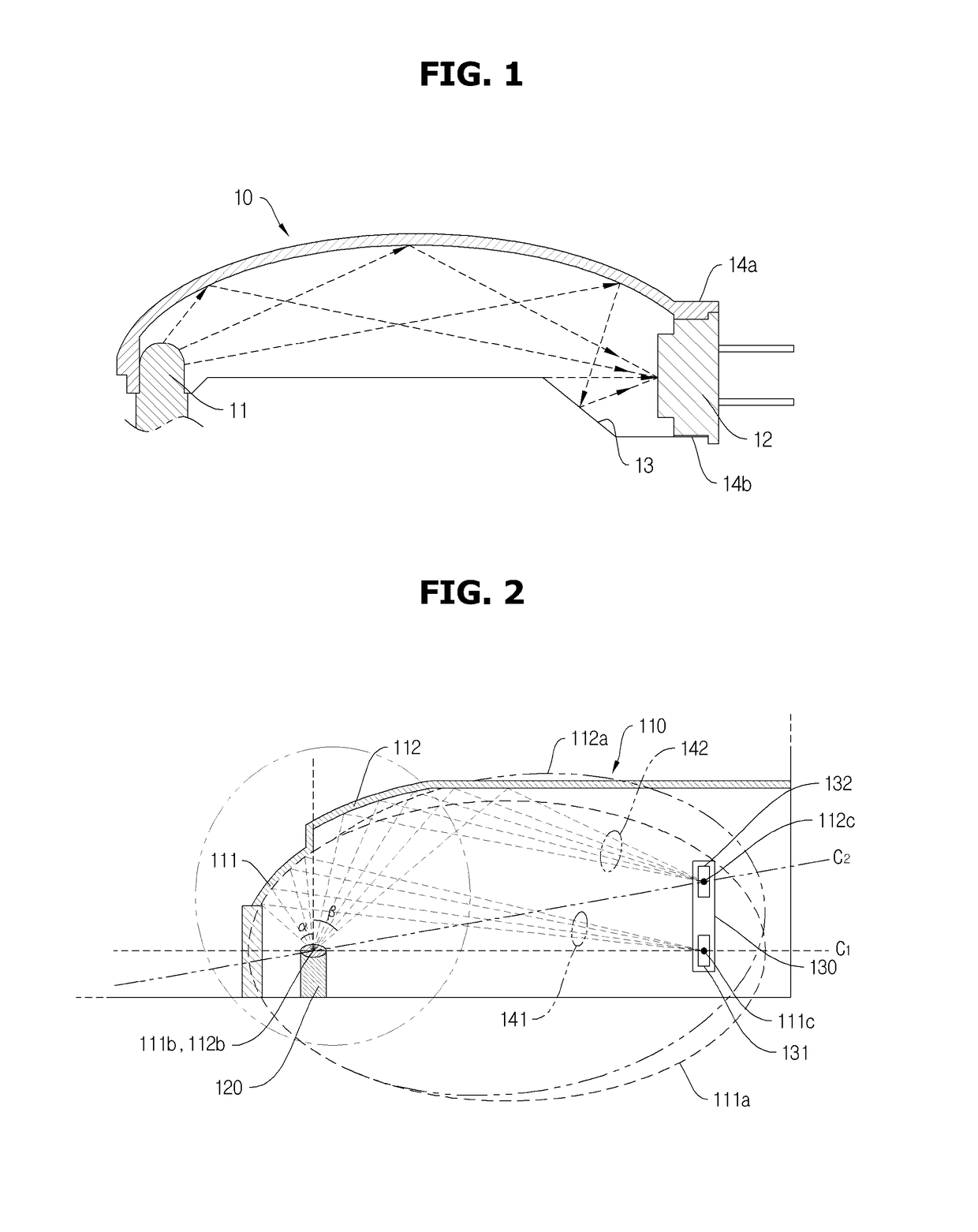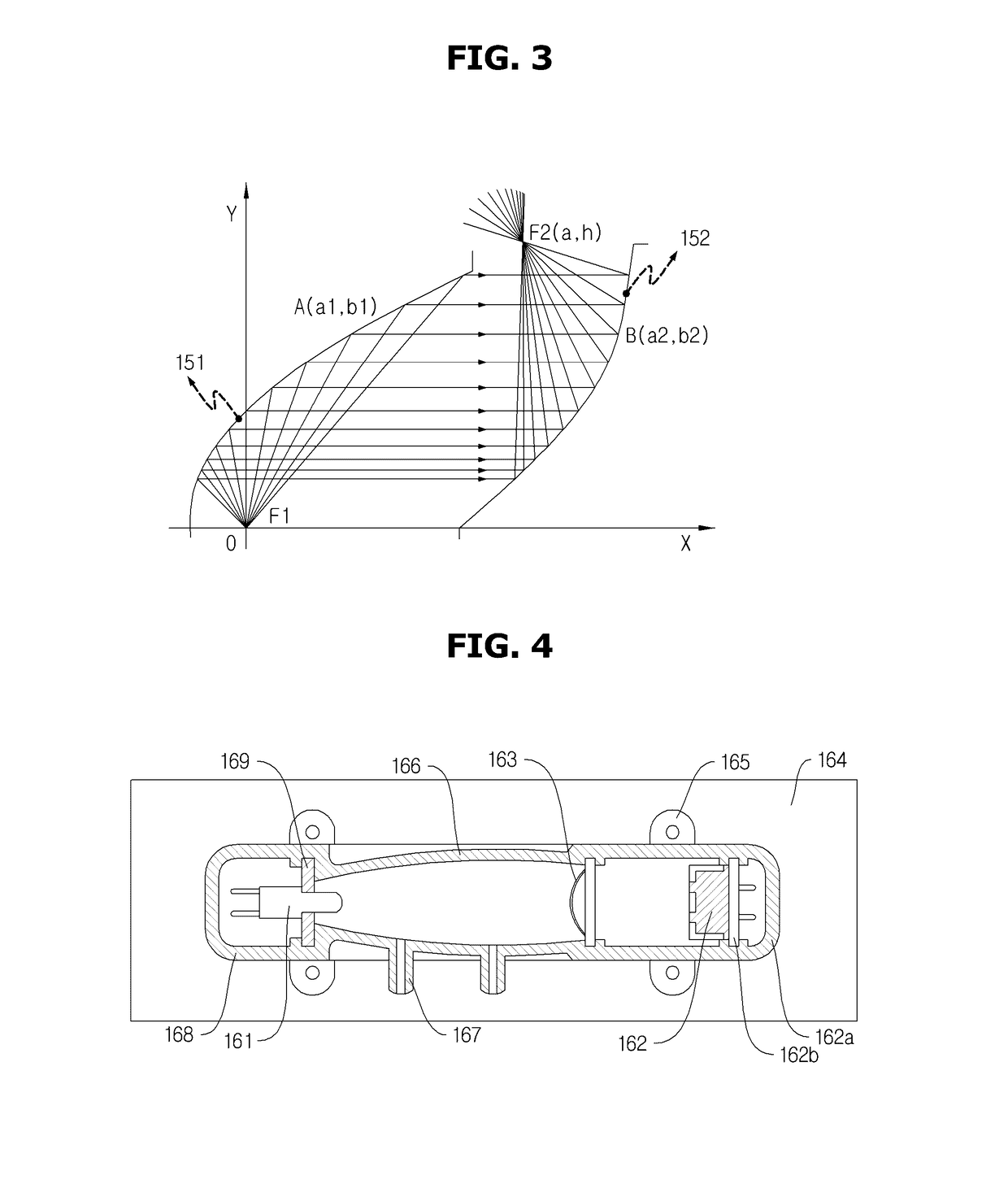Optical wave guide having multiple independent optical path and optical gas sensor using that
a technology of optical gas sensor and optical path, which is applied in the direction of optical radiation measurement, instruments, spectrophotometry/monochromators, etc., can solve the problems of ineffective use of light, inability to adequately irradiate to an optical sensor, and relatively short optical path, so as to reduce the amount of light loss and minimize light reflection
- Summary
- Abstract
- Description
- Claims
- Application Information
AI Technical Summary
Benefits of technology
Problems solved by technology
Method used
Image
Examples
example 1
[0082]an optical wave guide is realized by two 3 dimensional elliptical mirrors, a light source is installed at a second focal point (F2) of one of the elliptical mirrors, and an optical sensor part is installed at a second focal point (F2) of another elliptical mirror.
[0083]FIG. 11A is drawing illustrating an optical wave guide having multiple independent optical path in accordance with example 1 of the present invention, and FIG. 11B illustrates results of simulation of shape of light flux arriving at an optical sensor part, and FIG. 12 illustrates energy of incident light per unit area according to angles between major axis of two 3 dimensional elliptical mirrors, and FIG. 13A, FIG. 13B and FIG. 13C illustrate results of simulation of shape of light flux arriving at an optical sensor part according to angles between major axis of two 3 dimensional elliptical mirrors, and FIG. 14 illustrates relationship between radius of condensation of incident light arriving at an optical senso...
example 2
[0092]an optical wave guide is realized by two 3 dimensional elliptical mirrors, an optical sensor part is installed at a first focal point (F1), which is a common focal point, and light sources are installed at each second focal points (F2) of two 3 dimensional elliptical mirrors
[0093]As in example 2, when an optical wave guide is configured, it is difficult to condense light irradiating from two light sources within tens˜hundreds μm radius (in other words, Field of View) from the center of an optical sensor part. The reason is that light irradiating from two light sources causes interference.
example 3
[0094]an optical wave guide is realized by two 3 dimensional elliptical mirrors, a light source is installed at a first focal point (F1), which is a common focal point, and optical sensor parts are installed at each second focal points (F2) of two 3 dimensional elliptical mirrors
[0095]FIG. 15 illustrates optical paths when an optical wave guide having multiple independent optical path in accordance with the present invention has two elliptical mirrors, FIG. 16A, FIG. 16B and FIG. 17 illustrate results of simulation of energy of light per unit area arriving at a left side and right side according to change in angles between major axis of 3 dimensional elliptical mirrors according to structure illustrated in FIG. 15, FIG. 18A, FIG. 18B, FIG. 18C and FIG. 18D illustrate a shape of an optical flux of an incident light arriving at an optical sensor part according to change in angles between major axis according to structure illustrated in FIG. 15.
[0096]First, referring to FIG. 15, it ill...
PUM
| Property | Measurement | Unit |
|---|---|---|
| angle | aaaaa | aaaaa |
| angle | aaaaa | aaaaa |
| wavelength ranges | aaaaa | aaaaa |
Abstract
Description
Claims
Application Information
 Login to View More
Login to View More - R&D
- Intellectual Property
- Life Sciences
- Materials
- Tech Scout
- Unparalleled Data Quality
- Higher Quality Content
- 60% Fewer Hallucinations
Browse by: Latest US Patents, China's latest patents, Technical Efficacy Thesaurus, Application Domain, Technology Topic, Popular Technical Reports.
© 2025 PatSnap. All rights reserved.Legal|Privacy policy|Modern Slavery Act Transparency Statement|Sitemap|About US| Contact US: help@patsnap.com



